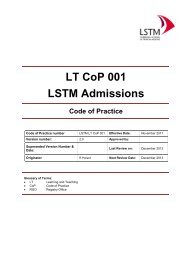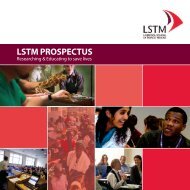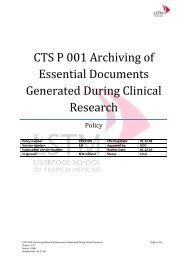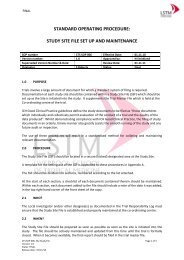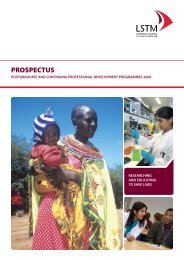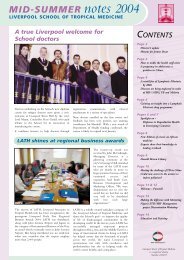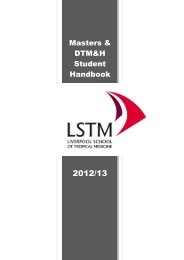Gender influences on child survival, health and nutrition: a ... - Unicef
Gender influences on child survival, health and nutrition: a ... - Unicef
Gender influences on child survival, health and nutrition: a ... - Unicef
Create successful ePaper yourself
Turn your PDF publications into a flip-book with our unique Google optimized e-Paper software.
<str<strong>on</strong>g>Gender</str<strong>on</strong>g> Influences On Child Survival, Health And Nutriti<strong>on</strong>: A Narrative Review<br />
power <strong>and</strong> increased access to <strong>and</strong> c<strong>on</strong>trol over resources. These two factors are in fact often<br />
interrelated, since women in households may wield more c<strong>on</strong>trol over their resources when they have<br />
greater decisi<strong>on</strong>-making power, or vice versa. However in some situati<strong>on</strong>s it is also c<strong>on</strong>ceivable that<br />
mothers might have access to resources <strong>and</strong> simultaneously be unable to influence the decisi<strong>on</strong>-making<br />
process involved in the use <strong>and</strong> c<strong>on</strong>trol of those resources. Studies may therefore explore these factors<br />
separately or in combinati<strong>on</strong>.<br />
Decisi<strong>on</strong>-making power <strong>and</strong> access to <strong>and</strong> c<strong>on</strong>trol over resources are key elements of women’s<br />
bargaining power within the household (see Box 3 for a definiti<strong>on</strong> of intra-household bargaining). Figure<br />
1 (see below) provides an interpretati<strong>on</strong> of the way in which women’s bargaining power reflects both<br />
decisi<strong>on</strong>-making power <strong>and</strong> access to <strong>and</strong> c<strong>on</strong>trol over resources <strong>and</strong> the effect these may have <strong>on</strong> <strong>child</strong><br />
<strong>health</strong> <strong>and</strong> nutriti<strong>on</strong> <strong>and</strong> ultimately <strong>on</strong> <strong>child</strong> <strong>survival</strong>. The studies included in this secti<strong>on</strong> reflect multiple<br />
<strong>and</strong> interlinking aspects of intra-household bargaining power <strong>and</strong> processes.<br />
Box 3: Introducing intra-household bargaining<br />
Bargaining as a c<strong>on</strong>cept was established by Sen’s theory of ‘intra-household bargaining’ (Sen<br />
1990) which illustrates how inequality between different members of a household effects its<br />
decisi<strong>on</strong>-making processes <strong>and</strong> allocati<strong>on</strong> of resources. According to Sen, an individual’s<br />
‘entitlements’ to make decisi<strong>on</strong>s <strong>and</strong> use resources are determined by their positi<strong>on</strong> within the<br />
household, both in terms of their ‘perceived c<strong>on</strong>tributi<strong>on</strong>’ <strong>and</strong> in terms of their ‘breakdown<br />
positi<strong>on</strong>’ (their social <strong>and</strong> ec<strong>on</strong>omic positi<strong>on</strong> were the relati<strong>on</strong>ship to end or break down). Where<br />
women have fewer opportunities to earn income outside of the home, <strong>and</strong> where <strong>child</strong> care <strong>and</strong><br />
domestic duties are perceived as ‘lower status’ c<strong>on</strong>tributi<strong>on</strong>s, women’s bargaining power is<br />
diminished, as their positi<strong>on</strong> is more vulnerable in the event of a ‘break down’ in the relati<strong>on</strong>ship.<br />
REVIEW OF STUDIES<br />
16




